The following is a photo essay by Behrad Nafissi Mistry. Born into the caste of Zoroastrian priests, Behrad is half Indian Parsi, half Iranian and is currently training to also serve as a priest. Behrad is a photo-journalist at Amordad Zoroastrian News Agency and Humans of Tehran. He holds a B.A. in English Literature and an M.A. in Comparative Literature from Shahid Beheshti University. This series will focus on Tehran’s Zoroastrian community and their practices before, during, and after Nowruz. Part 2 can be found here.
The following text has been translated from Persian by Beeta Baghoolizadeh.

Celebrated from Eastern Anatolia to the western parts of China, diverse communities claim Nowruz as their own New Year’s holiday. While many recognize that Nowruz, which coincides with the Spring Equinox, has roots in Zoroastrianism, very few know how Zoroastrians celebrate this holiday in parts of Iran today.
Understanding the Zoroastrian approach to Nowruz requires a knowledge of the Zoroastrian calendar. Structured around five-day weeks, called “panje,” the Zoroastrian calendar has twelve months with thirty days each, with an extra five-day week at the end, called the Panjeye Bozorg, or the “Big Five.” The Zoroastrian calendar does not include “weekends,” but the numerous scattered holidays and festivals account for the remaining calendar days.
The last five days of the last month of the year, called Panjeye Kuchak or “the Small Five,” coincides roughly with March 10-15. During these five days, Zoroastrians take care of the preparatory aspects of Nowruz, including the spring cleaning and buying of new clothes.
Following the Panjeye Kuchak, Zoroastrians believe that the souls of their loved ones and ancestors will return to their homes during the last week of the year, the Panjeye Bozorg, the last five days of the year. Taking care of their spring cleaning before the Panjeye Bozorg reflects one way of welcoming these spirits into their homes.
In case some spirits lose their way home, Zoroastrian communities in Yazd and Kerman light fires on their roofs to help guide the fravarhars–the soul that God has bestowed upon humans–descending from the skies on the last night of the Panjeye Bozorg. Some view this as one of the many roots to Chaharshanbe Suri, a holiday where non-Zoroastrian Iranians jump over fire on the last Tuesday night of the year. The relationship might be possible, except that Zoroastrians do not celebrate Chaharshanbe Suri: the Zoroastrian calendar has no “chaharshanbe,” or “Wednesday,” and jumping over fire is seen as disrespectful to fire, which Zoroastrians hold sacred.
Additionally, Zoroastrians believe that Ahura Mazda, or God, created humankind in these Panjeye Bozorg days. In Zoroastrian cosmology, Ahura Mazda created all the planet and people in the span of one year, divided into six periods, each called a “gah-anbar.” The last five days of the year–the Panjeye Bozorg–coincide with the last gah-anbar.
Further, Zoroastrians also believe that Zoroaster became prophet and wrote the Gathas during Panjeye Bozorg as well. Zoroastrians regard the Gathas as a divinely inspired book, in which Zoroaster wrote about Ahura Mazda (God), his conversations with Ahura Mazda and the amisha spenta, or angels. The oldest book of the Avesta, the Gathas comprises five chapters, each of which was written on one day of the Panjeye Bozorg. Thus, each day of the Panjeye Bozorg is known by the name of its coinciding chapter of the Gathas: 1) Ahnavad, 2) Ushtavad, 3) Sepantamad, 4) Vohukh’shetra, 5) Vahishtvash.
Suffice it to say, the Panjeye Bozorg represents an important and holy part of Zoroastrian calendar.
On the first day of the Panjeye Bozorg, priests go to the fire temple and recite from the Avesta in the early hours of the day, usually around 2:30 or 3am. Two or three priests, or mowbad, take part in the Vaaj-Yasht, reciting from the Yasna and the Gathas and the preparing a special mixture from water and a sap in sacred metal dishes. The priests continue to do this until sunrise, when the lay members of the Zoroastrian community come to the fire temple. Other priests lead the community in a group prayer, which involves recitation of different sections from the Avesta.
By 7:30 or 8 AM, the first series of prayers are finished, and they share breakfast.
On the following days of the Panjeye Bozorg, Zoroastrians attend prayer services in the mornings and evenings. These photos are from the evening prayers of the second day of the Panjeye Bozorg, at the Rostam Bagh fire temple in Tehranpars. The evening prayer services are extremely involved with various sections, documented in the following photos.
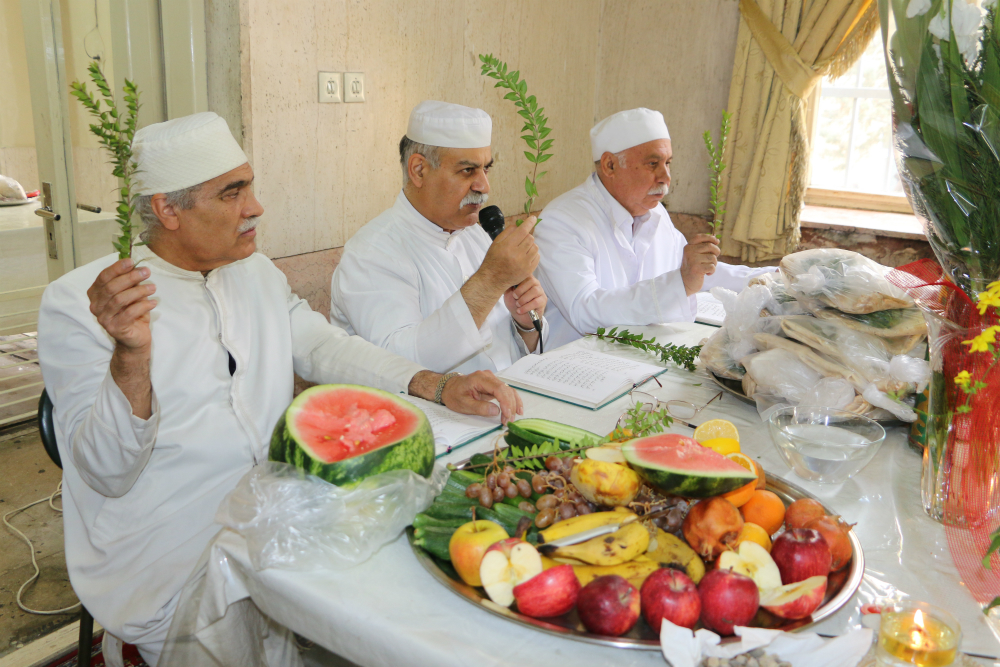
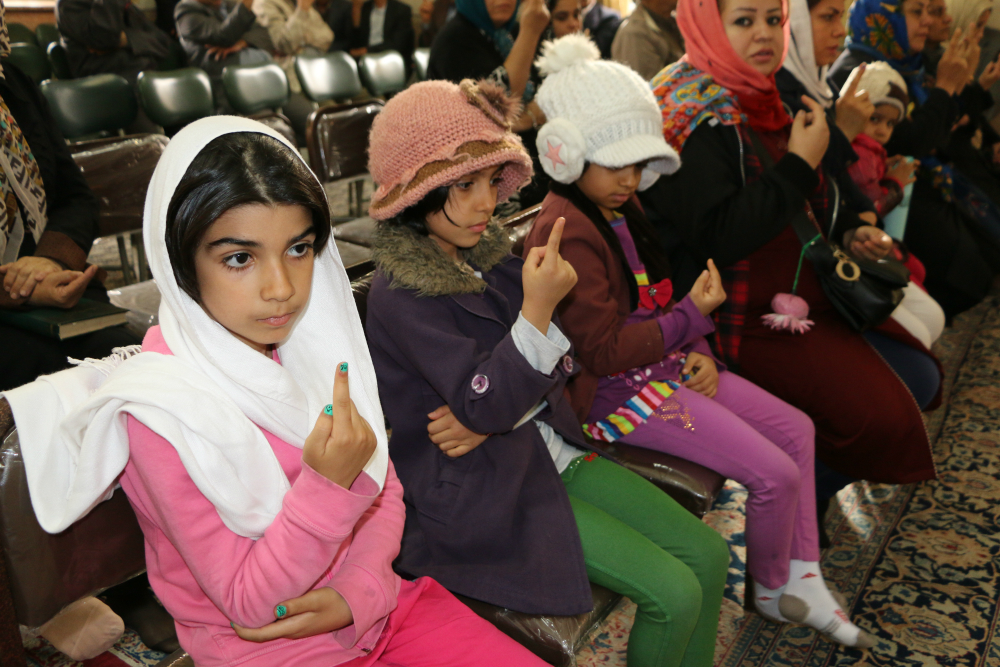
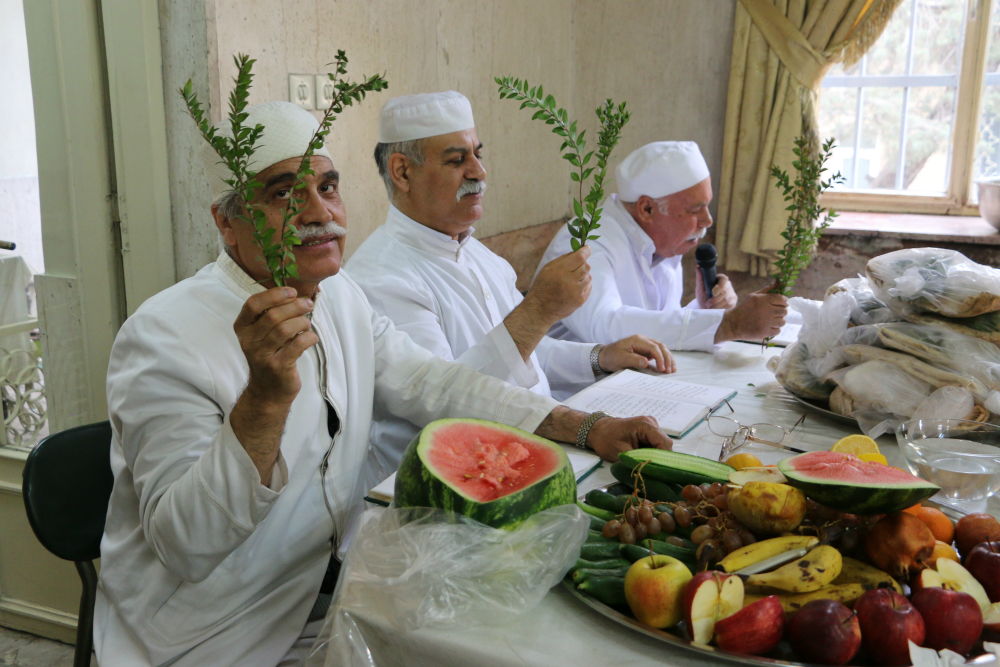





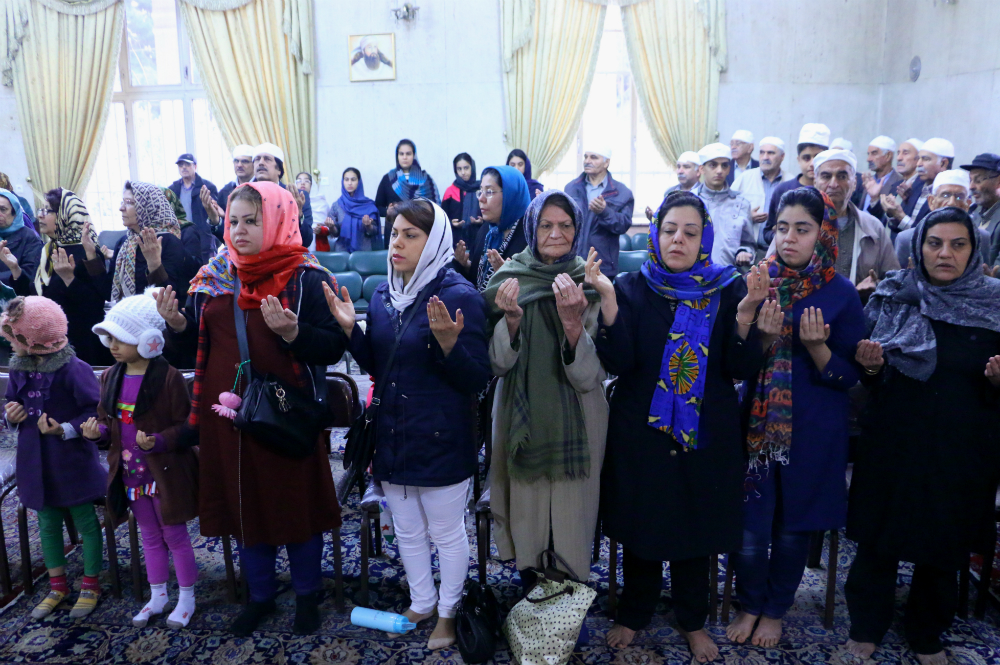

The following photos are of the various religious foods found at Zoroastrian services.
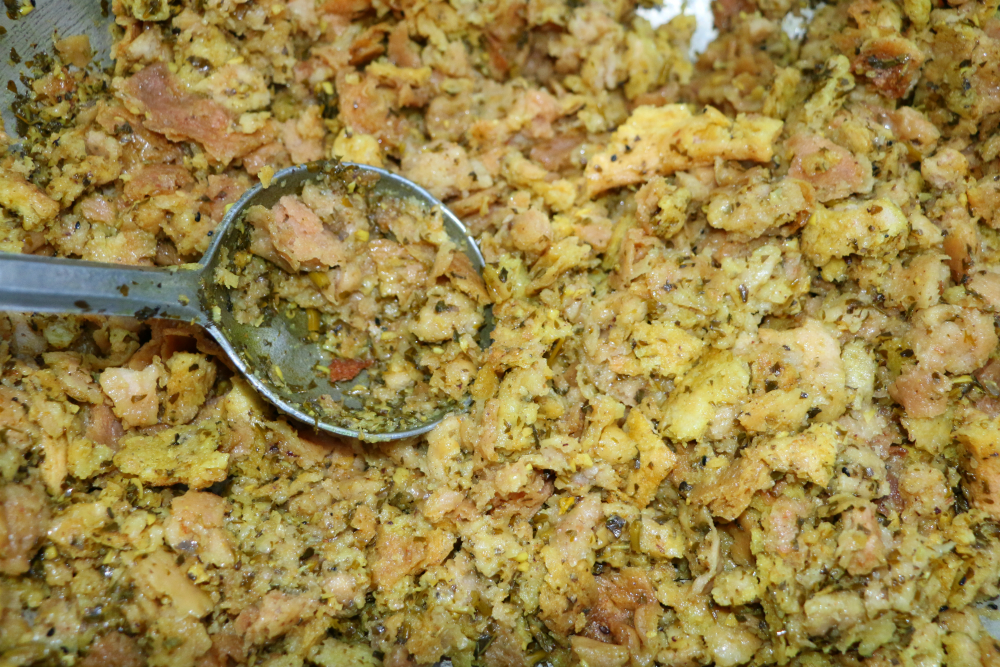

During the ceremony, priests cut fruit, which is served after the ceremony. This dish, like all other dishes that hold religious foods, must be circular to reflect the roundness of the planet. During prayer services, priests usually hold myrtle branch or a pomegranate, which they then rotate around the dishes of religious foods, to extend the prayers to the entire planet. After circling the plate with the branches or pomegranate, the priest then point them towards the top, bottom, left and right sides of the dish to represent sending the prayers in all cardinal directions. Finally, they put the branches, pomegranate, or both in the center of the dish, to indicate that their place of worship is the center of the world, emanating prayers to all corners of the planet.
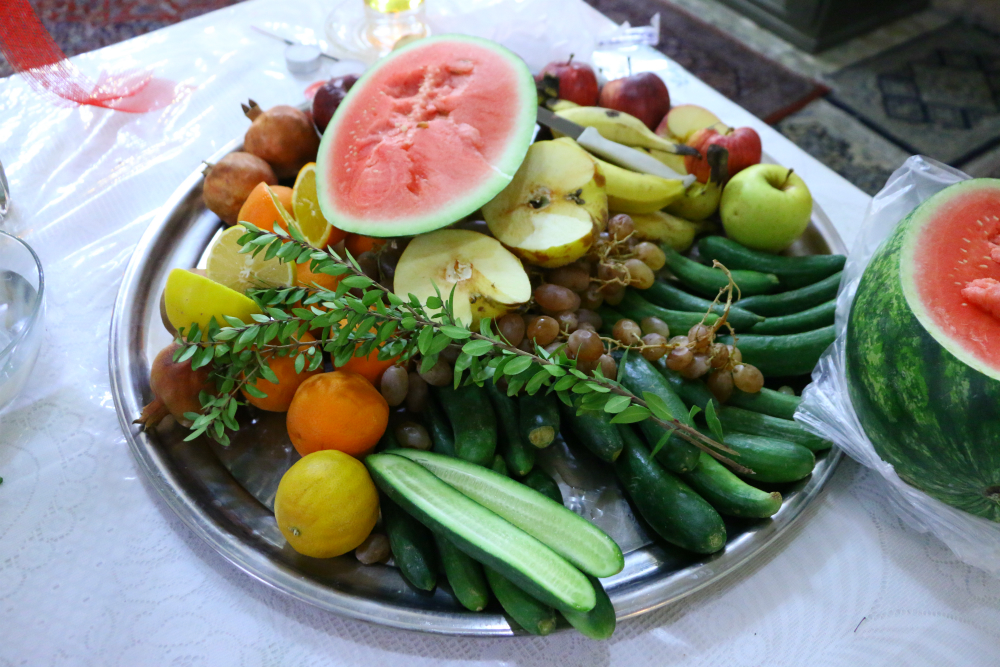
After the formal prayer services have concluded, members of the religious community give lectures.

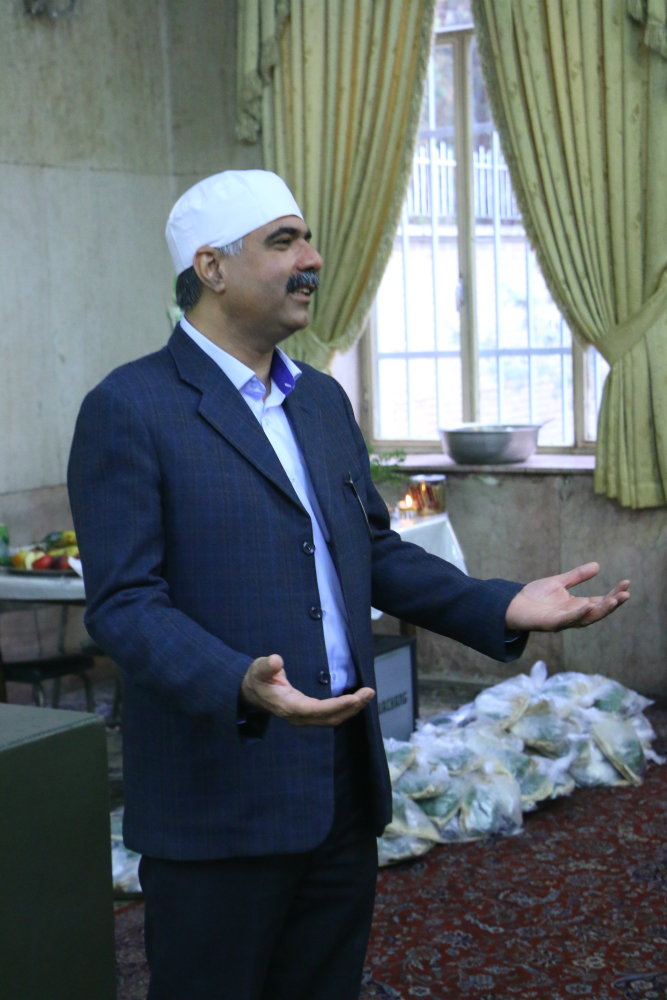

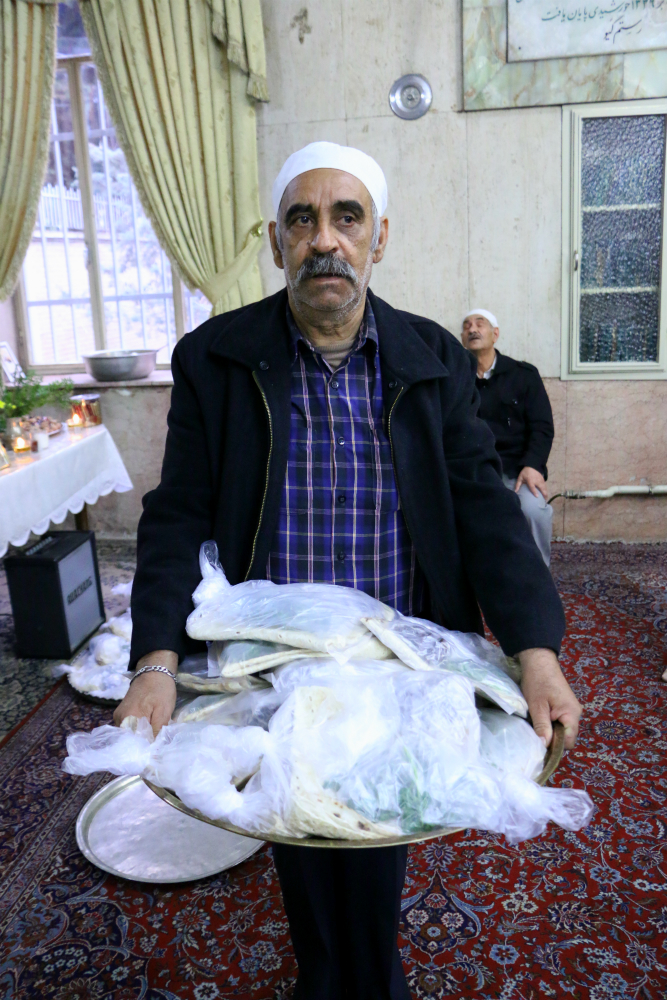

Zoroastrians pray five times a day, and each time of prayer is called a gah. The five gah include Havan, from sunrise until noon; Rapitvan, from noon until 3pm; Oziran, from 3pm to sunset; Ayvesrutrem, from sunset until midnight; and Oshehan, from midnight until sunrise.




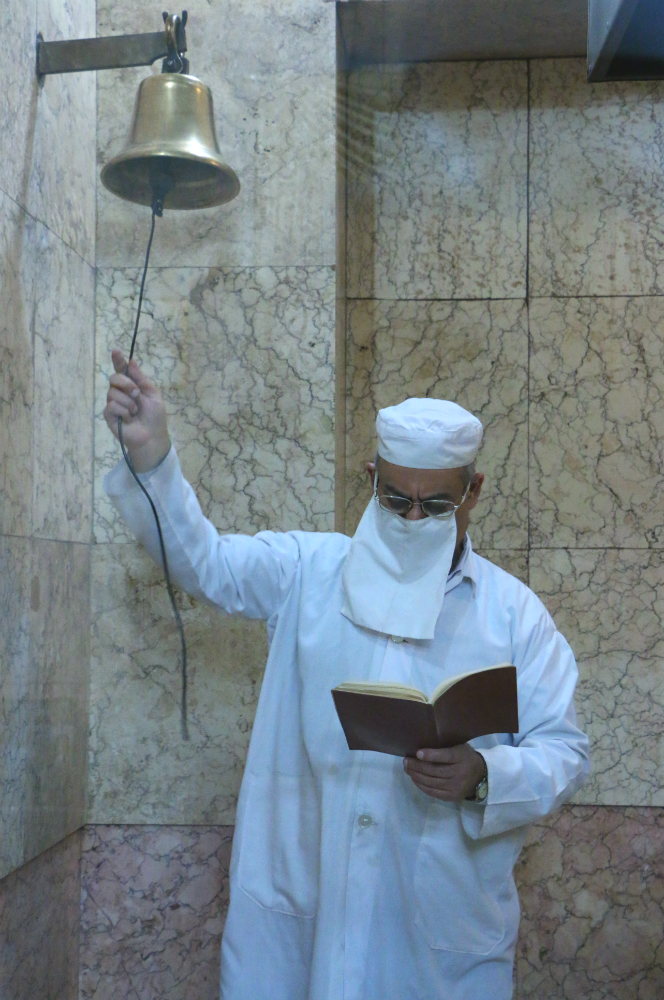
By the time the priest leaves his shift, it is dark out. But there are more prayers left for him to do–he still has to read the second chapter of the Gathas in honor of the second day of the Panjeye Bozorg. The following days will also involve many prayers and rituals in celebration of this holy period and in preparation for Nowruz.















9 comments
Very informative. The pictures added on to the text. Thanks.
very informative and let pray that we continue our religion and may the holy fire keep burning and show us the right path always
beautiful photos thank you – we are forwarding to others – Meher Master-Moos
Ahuramazda! !May Atash Padshah Sahebs glow infinitely to banish human frailty. May Atash Padshah Sahebs help shed our ignorance. Amen! !
beautiful photos Khuda Meheraban
Great article and always good to read about our religious practices.
آفرین!!!
Excellent